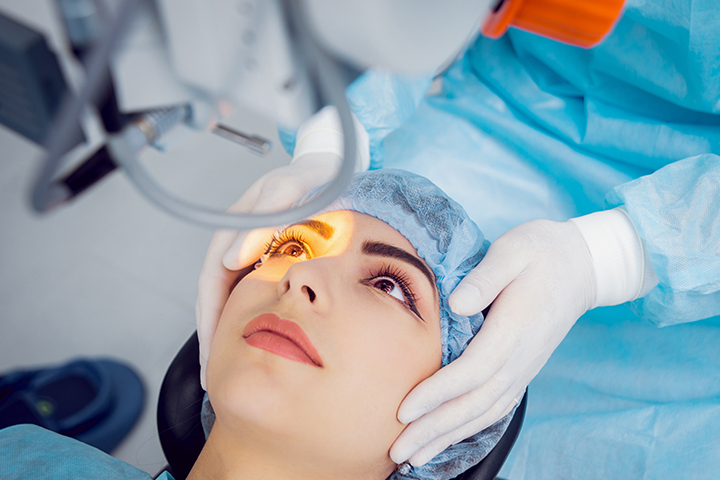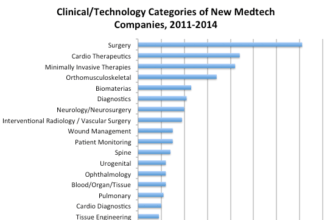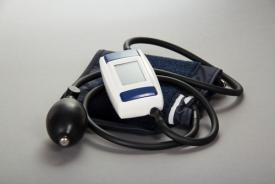The U.S. FDA has already approved Ivantis’s Hydrus Microstent and Allergan’s XEN Gel Stent for minimally invasive glaucoma surgery. With ongoing research activities, there will be more approvals in the future to help glaucoma patients.
The World Health Organization (WHO) survey states that glaucoma is the second highest cause of blindness in the world. Many people have this condition, but unaware of it. The symptoms are not evident until the patient loses his sight. Judith Smith, a nurse by profession, showed the signs of glaucoma during her regular visit to the ophthalmologist a few years ago. Even though glaucoma is a permanent condition, the available treatment can slow down the progression. There are eye drops available which can either increase or decrease the quantity of fluid in the eye or enhance the outward flow. This reduces the eye pressure and safeguards the optic nerve from damage. However, some patients do not respond well to them and show negative effects. Smith was one of them.
Then she met Robert Feldman, M.D., Chair of the Ruiz Department of Ophthalmology and Visual Science at McGovern Medical School at UTHealth, at her workplace. He was conducting a clinical trial to determine the efficacy of a minimally-invasive glaucoma surgery that used the InnFocus MicroShunt Glaucoma Drainage System. The study also aimed to compare the new system with a traditional trabeculectomy. Smith participated in the study.
The procedure in the study involved creating a small incision in the eye through which a MicroShunt will be inserted. This MicroShunt is the twice the size of an eyelash. It allows fluid to drain from the anterior chamber to the conjunctival flap of the eye. Researchers have used this procedure on 30 times during the past three years. Many of the participants have shown great outcomes. This procedure reduces recovery time and eliminates the need for surgery. The InnFocus MicroShunt procedure slows down the progression of glaucoma.
There have been many trials performed by research institutes and organizations to find minimally invasive devices for glaucoma surgery. The U.S. Food and Drug Administration (FDA) approved many of the stents for treatment of patients with glaucoma. Ivantis, a company aimed for development of innovative solutions for glaucoma, received FDA approval for Hydrus® Microstent. It is a minimally invasive glaucoma surgery (MIGS) device that can be utilized for the treatment of mild to moderate open-angle glaucoma in collaboration with cataract surgery.
David F. Chang, M.D., clinical professor of Ophthalmology at the University of California, San Francisco, said, “The Hydrus Microstent scaffolds approximately 90 degrees of the patient’s natural canal outflow pathway. Correct anatomic placement into the canal will also be easier for surgeons to confirm.”
The clinical data regarding Hydrus shows its safety and two-year efficacy along with its ability to eliminate medications. The eyelash-sized device lowers the eye pressure through maintenance of flow through Schlemm’s canal, the eye’s natural outflow pathway. It has been used in nearly 4,000 procedures across the globe. Ivantis is now planning to build the commercial and manufacturing infrastructures along with the launch of the product in late 2018.
In November 2016, the FDA also approved XEN Gel Stent by Allergan. This device can be used in MIGS procedures combined with cataract surgery to enable a two-in-one procedure. It will reduce IOP through drainage of aqueous humor into the subconjunctival space. It avoids the use of the traditional pathways such as the uveoscleral pathway or the trabecular meshwork.
The Xen Glaucoma Treatment System has the Xen 45 gel stent along with the disposable Xen injector. The 6 mm gel stent has gelatin cross-linked with glutaraldehyde, which is stiff but gets flexible when hydrated using the aqueous humor. This hydration makes the gel secure from erosion or fibrosis. The cross-linking prevents the degradation of the stent over time. These factors ensure a stable structure of the gel stent to circulate the aqueous humor appropriately. The stent is inserted through a corneal incision using the Xen injector. Then gel stent reduces IOP by letting the aqueous humor drain through the subconjunctival space. This is a minimally invasive approach.
The trend of FDA approval will continue with ongoing research and development activities, it will take the MIGS devices market to great heights. According to the research firm Allied Market Research, the global minimally invasive glaucoma surgery (MIGS) devices market would reach $912 million by 2023. Owing to long-term IOP control and the ability of clinicians to intervene in earlier stages of glaucoma lifecycle, the demand for MIGS devices is increasing. In a discussion with Primary Care Optometry News, John Berdahl, MD, said the benefits of micro-invasive glaucoma surgery (MIGS) have been overwhelming and offer safety. “Surgeons across the U.S. are flocking to these procedures,” he added. “With MIGS, we can lower eye pressure without patients having to take medication, or we can reduce the number of medications they need while still not subjecting them to the risks of traditional glaucoma surgery.”








